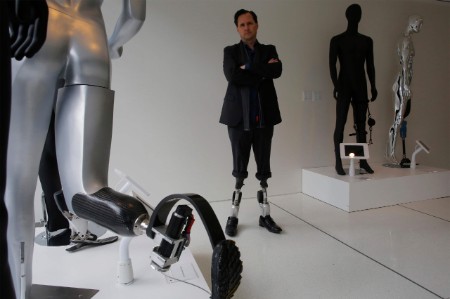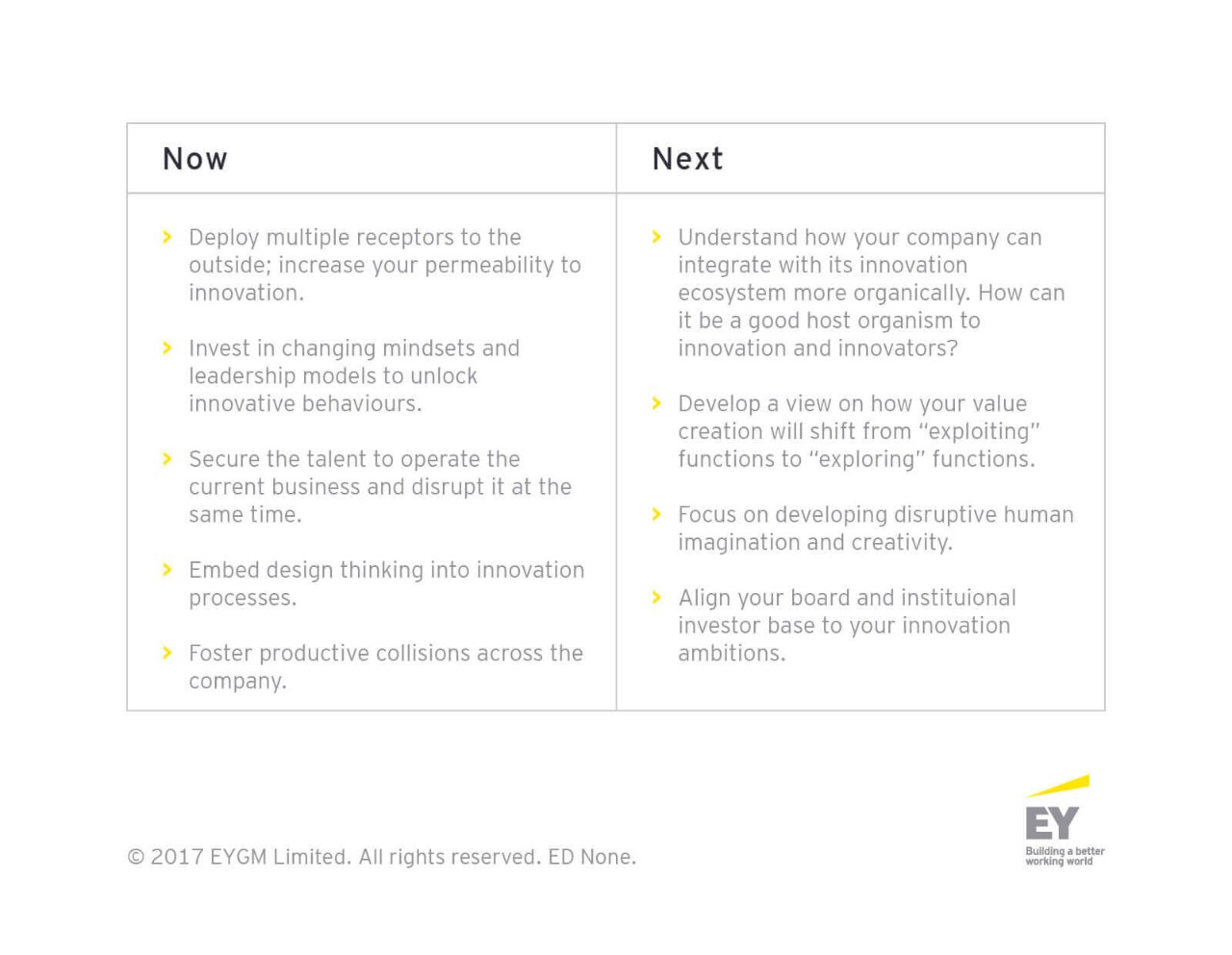3. Develop a new talent and leadership model
Where knowing more used to be a differentiator in career progression, today it is about how effectively you can collaborate and connect knowledge internally and externally to create value for the organization.
Middle management is a potentially rich source of ingenuity that remains untapped. People tend to emulate the qualities that got their leaders promoted and middle managers are no exception. However, the middle management qualities that were typically valued in the past—execution, incrementalism, risk management— are inadequate for the demands of the future. To unlock their innovative potential, middle managers need leadership that models risk-taking and rewards disruptive innovation initiatives.
You also have to have the right talent mix — both people who can operate the core business now and those who can ultimately disrupt it.
4. Move from “no” to “how”
Becoming disruption-ready also means working closely with regulators, as well as internal compliance functions, such as legal, risk and internal audit. It is important to engage these stakeholders to understand their needs and help them tap into the knowledge and diversity of thinking required to address new opportunities. Companies need to help them move from the more conditioned position of saying “no” to saying “how,” says Colella.
5. Sustain investments in disruption
Developing the attributes of disruption readiness demands sustained investment in organizational transformation, capabilities and innovation initiatives. One-off, disconnected projects will not have lasting impact. For this reason, the CFO, CEO and board need to align to a shared ambition for disruptive innovation to guide the needed investment, governance and message to shareholders.
The message to institutional shareholders is particularly important. EYQ recently surveyed 100 institutional investors worldwide, each with at least US$1 billion in assets under management, to understand their perspectives on disruption and its influence on their decision-making. We found that global institutional investors embrace a corporate disruption readiness agenda that sees more upsides than risks in disruption.
- 55% agree that the pace and scale of change today require that market leading companies invest resources in exploring potentially disruptive new business models.
- 67% agree that companies should undertake potentially disruptive innovation projects that may be risky and not deliver short term returns.
- 73% agree that corporate disruption readiness will become more important to their investment decision making over the next five years.
Effectively communicating your innovation ambitions is key to attracting institutional investors who will support your disruption readiness agenda. It is also important to test your innovation vision with your current investor base. Do they support it? If not, you may need to work to change your investor base.
Act now and prepare for the future
Fear can either be a motivator, or it can be paralyzing. The key is to embrace it, says Kobe. Jeff Wong, EY Global Chief Innovation Officer, adds that “companies need to shift from reacting to creating.” They also need to have an iterative mindset. Things are moving so fast that what we think is different today may not be what we think six weeks from now. Wong advocates by staying focused on customer problems, companies will be able to find the answers they need.


